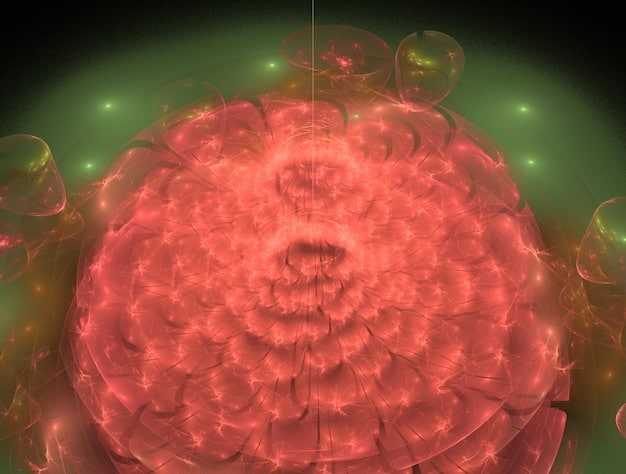Unlock Productivity with the Zeigarnik Effect: Complete Tasks Effectively

The Zeigarnik Effect, discovered by Bluma Zeigarnik, reveals our tendency to remember incomplete tasks better than completed ones, offering a powerful strategy to boost motivation and enhance productivity by intentionally creating and managing “open loops” in our work.
Do you ever find yourself inexplicably drawn back to a task you haven’t quite finished? That persistent pull is likely due to the Zeigarnik Effect, a psychological phenomenon that can be a powerful ally in staying motivated and completing tasks. Let’s explore how to leverage this effect to boost your productivity.
Understanding the Zeigarnik Effect
The Zeigarnik Effect, named after Lithuanian psychologist Bluma Zeigarnik, describes our brain’s tendency to dwell on incomplete tasks more than completed ones. This nagging feeling can be harnessed to improve focus and drive task completion, turning a potential distraction into a motivational tool.
The Experiment That Started It All
Zeigarnik’s discovery stemmed from observing waiters in a cafe. She noticed they remembered orders better while they were still in progress but tended to forget the details after the order was served and paid for. This observation led to her groundbreaking research on the effect of unfinished tasks on memory.
How It Works in the Brain
When we start a task, our brain creates what’s known as an “open loop.” This loop stays active, constantly reminding us of the unfinished business. Only upon completion of the task does the loop close, releasing the mental tension and allowing us to move on. If the task remains incomplete, the loop stays open, keeping it at the forefront of our mind.

This constant mental nudging can be both beneficial and detrimental. While it can motivate us to finish what we started, it can also lead to stress and distraction if we have too many open loops at once. Understanding this balance is key to effectively using the Zeigarnik Effect to our advantage.
To make the most of the Zeigarnik Effect, consider these strategies:
- Break down large tasks into smaller, manageable chunks.
- Start tasks, even if you only have a few minutes, to activate the “open loop.”
- Create a system for tracking incomplete tasks to manage mental clutter.
Understanding the underpinnings of the Zeigarnik Effect empowers us to strategically manage our tasks and maintain better focus, ultimately enhancing our efficiency and driving us to achieve our goals.
The Benefits of Leveraging Open Loops
The Zeigarnik Effect, while seemingly a simple observation, offers profound benefits when consciously applied to work and life. By intentionally creating and managing “open loops,” we can tap into our natural inclination to complete what we’ve started, leading to greater productivity and reduced procrastination.
Enhanced Motivation
When we start a task, even if we don’t finish it immediately, the Zeigarnik Effect kicks in, creating a sense of anticipation and a desire to see it through. This can be particularly helpful for tasks we tend to avoid. By simply initiating the task, we spark our internal motivation to complete it.
Improved Focus
With open loops running in the background, our minds are subtly reminded of what needs to be done. This constant, gentle pressure can improve focus by preventing us from getting too sidetracked by other distractions. It’s like having a persistent, yet unobtrusive, reminder system built into our brain.
Consider these practical applications for leveraging open loops:
- Before leaving work for the day, outline the first few steps of tomorrow’s most important task.
- Start writing a blog post, even if you only create a title and a few bullet points.
- Open a document or project file to prime your mind for future work.
By understanding and leveraging the Zeigarnik Effect, individuals can cultivate a heightened sense of motivation and sharper focus in their daily endeavors, ultimately driving them to achieve their goals more efficiently.
Practical Applications in Daily Life
The Zeigarnik Effect isn’t just a psychological theory; it’s a practical tool that can be applied to almost every aspect of daily life. From household chores to complex projects, understanding how open loops influence our behavior can lead to significant improvements in productivity and well-being.
Boosting Productivity at Work
In the workplace, the Zeigarnik Effect can be a powerful ally in overcoming procrastination and managing workload. By breaking down large projects into smaller, more manageable tasks, you create multiple open loops that gently push you towards completion.
Enhancing Learning and Memory
The Zeigarnik Effect also plays a role in learning and memory retention. When studying, starting a topic and leaving it unfinished can actually help you remember it better. Your brain will continue to process the information in the background, reinforcing your understanding.

Here are a few ways to incorporate the Zeigarnik Effect into your routine:
- When facing a daunting task, commit to working on it for just 15 minutes to initiate the open loop.
- Use a physical or digital task management system to keep track of incomplete tasks and visualize your progress.
- Before meetings, jot down key questions to create open loops that enhance your focus during the discussion.
By consciously applying the Zeigarnik Effect in these varied scenarios, individuals can effectively enhance their engagement, streamline their approach to work, and reinforce their memory retention capabilities.
Overcoming the Downsides: Managing Open Loops Effectively
While the Zeigarnik Effect can be a powerful tool for motivation and productivity, it’s essential to recognize and manage its potential downsides. Too many open loops can lead to stress, overwhelm, and a feeling of being constantly burdened by unfinished tasks.
The Risk of Overwhelm
Having too many unfinished tasks swirling in your mind can create a sense of mental clutter and anxiety. This can be especially problematic for individuals who are already prone to stress or perfectionism. The key is to strike a balance between using the Zeigarnik Effect to stay motivated and avoiding overload.
Strategies for Closure
One of the most effective ways to manage open loops is to actively seek closure. This might involve completing tasks, delegating them to others, or even deciding to abandon them altogether if they are no longer relevant or achievable. The act of consciously closing a loop can bring a sense of relief and clarity.
To effectively manage open loops and mitigate potential downsides, consider these practices:
- Prioritize tasks ruthlessly and focus on completing the most important ones first.
- Set realistic deadlines for completing tasks and stick to them as closely as possible.
- Regularly review your task list and eliminate tasks that are no longer necessary or feasible.
By adopting these conscious techniques in managing unfinished tasks, individuals can harness the Zeigarnik Effect without succumbing to its potential drawbacks, thereby promoting a more balanced and productive lifestyle.
The Zeigarnik Effect and Procrastination
Procrastination, the seemingly universal struggle of delaying tasks, can be significantly influenced by the Zeigarnik Effect. While it might seem counterintuitive, understanding this psychological phenomenon can provide valuable insights into why we procrastinate and how to overcome this habit.
Understanding Why We Procrastinate
Procrastination often stems from a fear of failure, feeling overwhelmed by a task, or simply a lack of motivation. The Zeigarnik Effect suggests that the discomfort of an open loop can actually contribute to procrastination. If a task feels too daunting, we might avoid starting it altogether to avoid the initial tension of the open loop.
Turning the Effect Around
However, the Zeigarnik Effect can also be used to combat procrastination. By breaking down large tasks into smaller, more manageable steps, we can create a series of smaller open loops that feel less intimidating. This can make it easier to get started and build momentum.
To leverage the Zeigarnik Effect and overcome procrastination, consider these actionable methods:
- Start with the easiest part of a task to create an initial open loop that is less daunting.
- Set a timer and commit to working on a task for just 15 minutes to get the ball rolling.
- Visualize the completed task and the sense of satisfaction that will come with closing the loop.
Through a better understanding of the Zeigarnik Effect, individuals can strategically transform procrastination into a more approachable and manageable process, eventually leading to improved productivity and task completion.
Advanced Techniques for Maximizing the Zeigarnik Effect
Once you understand the basic principles of the Zeigarnik Effect, you can explore more advanced techniques to further maximize its benefits. These methods involve creating more sophisticated open loops and leveraging them in creative ways to boost your motivation and productivity.
The Power of Visual Reminders
Visual cues can serve as powerful triggers for open loops. By placing visual reminders of incomplete tasks in your environment, you can constantly reinforce the Zeigarnik Effect and keep your goals top of mind. This might involve using sticky notes, whiteboards, or even digital dashboards.
Gamifying Task Completion
Turning task completion into a game can add an extra layer of motivation. By setting rewards for completing tasks and tracking your progress, you can create a sense of competition and achievement that further reinforces the Zeigarnik Effect. This can be particularly effective for tasks that you find tedious or uninspiring.
To amplify the Zeigarnik Effect and realize its maximum potential, explore these refined approaches:
- Use mind mapping to visually represent tasks and their interconnections, creating a network of open loops.
- Employ the Pomodoro Technique, breaking work into intervals with scheduled breaks to maintain focus and manage mental strain.
- Incorporate public commitment, sharing your goals with others to intensify the sense of responsibility and the drive to complete tasks.
Using these refined methods, individuals can harness the Zeigarnik Effect fully, transforming daily work into a more gamified, visually-driven process, dramatically boosting motivation and driving task completion.
| Key Point | Brief Description |
|---|---|
| 🧠 Open Loops | Unfinished tasks keep our brains engaged. |
| ✅ Motivation Boost | Start tasks to spark interest and motivation. |
| 🎯 Focus Improvement | Incomplete tasks subtly remind us, enhancing focus. |
| 💪 Task Management | Managing loops prevents overwhelm, promoting balance. |
Frequently Asked Questions
▼
The Zeigarnik Effect describes our tendency to remember incomplete tasks better than completed ones. This psychological phenomenon can be leveraged to boost motivation and productivity by creating “open loops” in our work.
▼
Break tasks into smaller, more manageable steps. Starting with the easiest part creates an initial “open loop” that feels less daunting. Commit to working for just 15 minutes to get the ball rolling and build momentum.
▼
Yes, having too many incomplete tasks can lead to stress and anxiety. Prioritize tasks, set realistic deadlines, and regularly review your task list to eliminate unnecessary or unfeasible items. Seek closure on tasks to reduce mental clutter.
▼
Yes, starting a topic and leaving it unfinished can help you remember it better. Your brain will continue to process the information in the background, reinforcing your understanding. Reviewing notes before stopping can enhance this effect.
▼
Use visual reminders like sticky notes or whiteboards to keep incomplete tasks top of mind. Gamify task completion by setting rewards and tracking progress. Mind mapping can create a network of open loops to boost motivation.
Conclusion
The Zeigarnik Effect offers a compelling strategy for enhancing motivation and productivity by understanding and leveraging our brain’s natural inclination to complete unfinished tasks. By consciously creating and managing open loops, we can tap into our innate drive to achieve our goals and overcome procrastination, leading to a more focused and fulfilling life.





